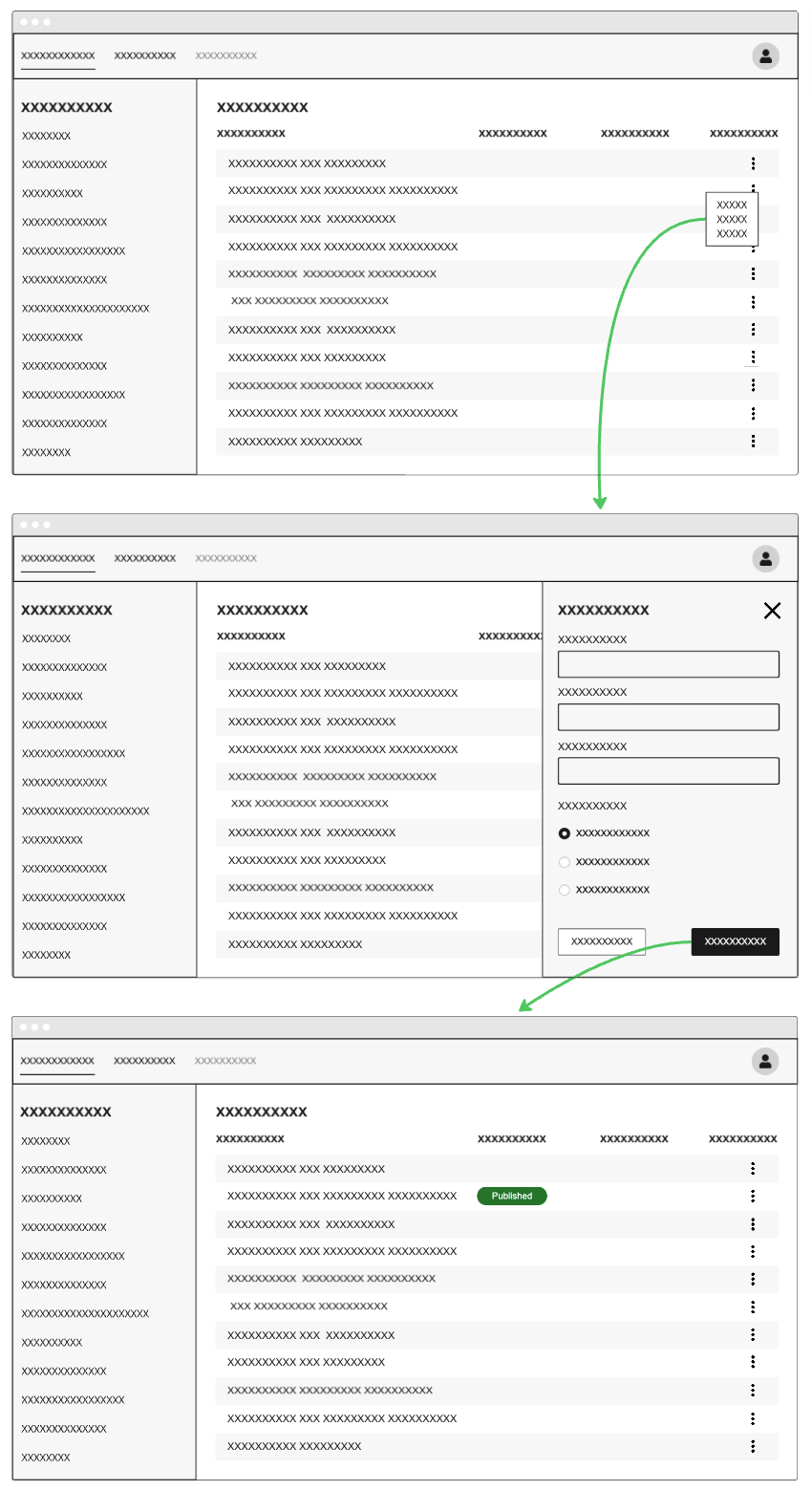Understanding user needs with contextual inquiry and prototypes
The Challenge
A team publishing critical documents was stuck with an outdated, broken legacy application that made their daily work unnecessarily painful. The application required workarounds, patience, and probably a few deep breaths.
My Role: UX Designer and Researcher
Discovery Process
Understanding the Users
Primary users
A small, specialized team responsible for publishing and managing documentsResponsible for a large amount of critical documents that are used for reference and sometimes for time-sensitive actions
Future users
A broader audience needing download-only access to document files
Contextual Inquiry
User observations
Watched live and recorded demos of the current publishing process (and witnessed the collective frustration)
Deep-dive conversations
Explored the publishing workflow, pain points, and the nuanced world of document managementProcess mapping
Asked lots of "why" and "what" questions to understand both the technical requirements and human needs
Key Insights
The legacy system created bottlenecks that turned routine publishing into an obstacle course and wasted valuable time
Users had developed workarounds that showed resourcefulness (and highlighted just how broken the original system was)
Made note of the opportunity to greatly simplify an overly-complicated task
Ideation & User Feedback
Wireframes
Created wireframes in Miro, focusing on workflow efficiency
Strategic decision: Designed the internal UI to mirror the public-facing site structure for cognitive consistency
Collaborated with development teams and product manager to assess feasibility and iterate based on technical constraints
User Testing & Collaborative Build Process
Conducted an interview series with document publishers throughout the design process
Integrated approach: Testing and design happened in parallel, not sequentially: we met after each iteration to validate UI and workflow improvements
Ensured the solution could scale for future enhancements and additional user types
Worked closely with stakeholders, product manager, and developers during implementation to ensure the design vision translated accurately to the final product
The Solution: A Lightweight, Intuitive Publishing Platform
Streamlined workflow
Eliminated workarounds and reduced publishing frictionQuality assurance
Confirmation and validations are designed so that documents are published correctly with accurate informationScalable foundation
Built to accommodate future users and functionalityFamiliar interface
Mirrored the public site's architecture for immediate user recognition
Impact & Results
Immediate Wins
Positive user feedback
The publishing team embraced the new systemImproved usability
Intuitive interface reduced learning curve to near zeroEfficiency gains
Eliminated time-consuming workarounds
Broader Impact & Takeaways
Happy users with more time
The new application transformed a source of frustration into a tool that actually supports users' expertise rather than hindering it. It frees up time for them to focus on other tasks and ensures the publishing process is more efficient, less prone to error and easier to manage.
User-centered research is effective
Working to understand the people and their pain points and perspectives on the tasks they are trying to accomplish provided invaluable insights that were well worth the upfront time investment. It allowed the product team to be empowered with the information we needed to make decisions and design thoughtfully because we clearly understood what the users needed.
